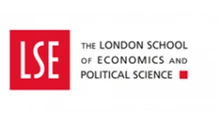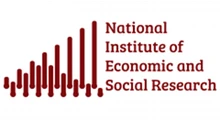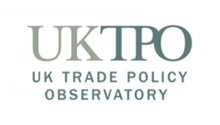The immediate inflationary impact of widening conflict in the Middle East is likely to be limited. But potential trade and supply chain disruptions, weakening business sentiment and elevated uncertainty could have major consequences for the global economy. Governments face tough budgetary choices.
The conflict between Iran and Israel adds another layer of geopolitical uncertainty to an already strained global outlook. Even before the latest escalation, the global economy was contending with elevated US import tariffs, persistent uncertainty around trade policies, concerns about the dollar’s global role, limited options for public spending (fiscal space) due to high levels of public debt, and rising long-term bond yields. The Iran-Israel conflict has compounded this fragile environment.
To provide some perspective, following Israel’s first strike on Iran on 13 June, the geopolitical risk index – a text-based measure that captures the intensity of adverse geopolitical events – spiked to its highest daily level since Russia’s full-scale invasion of Ukraine in February 2022 (see Figure 1).
As discussed in a previous Economics Observatory piece, geopolitical risks, particularly widening conflict in the Middle East, could have significant implications for the global economy.
Figure 1: Daily geopolitical risk index
Source: Caldara and Iacoviello, 2022
Note: Data downloaded from here on 18 June 2025.
Despite the immediate response from commodity prices (discussed below), the macroeconomic consequences, particularly for inflation, are likely to be more muted than initially feared. While we may see a drag on global activity due to supply chain issues, elevated uncertainty and regional economic disruption (especially due to rerouting of aviation and tourism activities), a major inflationary shock or significant central bank reaction, such as delaying interest rate cuts, seem unlikely at this stage.
Oil and gas prices have jumped, shipping costs surged
As expected, financial markets responded immediately to the outbreak of conflict, with a clear impact on the price of major commodities, such as oil and natural gas. This is unsurprising given that the Middle East accounts for roughly 34% of global oil production and 18% of natural gas output.
In addition to the direct implications of potential supply disruptions, geopolitical tensions and heightened global uncertainty typically drive investors towards commodities. As a result, since the beginning of the conflict on 13 June, Brent crude prices have risen by about 10%, while natural gas prices have increased by approximately 7% (see Figure 2).
Figure 2: Daily prices of Brent oil and natural gas
Source: investing.com
Further, the conflict has a direct impact on the Strait of Hormuz, one of the world’s most critical oil transit chokepoints. The strait is the main exit route from the Gulf for roughly 25% of global oil supply, including exports from Iran, Iraq, Kuwait, Qatar, Saudi Arabia and the United Arab Emirates. Daily data from the International Monetary Fund (IMF) already indicate a notable decline in the number of cargo and tanker ships passing through this shipping lane.
Any move by Iran to close the strait would represent a significant disruption to oil and gas markets, posing a shock to global supply chains and manufacturing output. Reports suggest that insurance premiums and freight costs for vessels in transit through the Strait of Hormuz have already increased markedly. These rising costs are reflected in two major global shipping cost indices (see Figure 3).
Figure 3: Indices of shipping costs
Source: Refinitiv Datastream
The inflationary impact could remain limited
The effect that higher commodity and shipping costs have on the wider economy (known as their economic transmission) is typically gradual and depends on several factors. While firms may decide to absorb additional costs in the short term, they eventually pass them on to consumers to protect their profit margins, leading to higher consumer inflation.
To assess the likely magnitude of this, we can use the National Institute’s global macroeconomic model (NiGEM) to simulate the impact of recent oil and gas price increases on inflation across major economies.
All else equal, the inflationary effect is likely to peak after about a year and remain relatively contained, ranging from 0.2 percentage points in the UK to 0.4 percentage points in China (see Figure 4). Unless further shocks materialise, this is unlikely to prompt a strong monetary policy response.
Figure 4: Impact of the recent rise in oil and gas prices on global inflation
Source: NiGEM simulations
It is also important to note that oil prices had fallen sharply since the beginning of April, partly in response to weaker global growth expectations following US tariff announcements. This suggests that some of the recent price increase reflects a correction rather than a new inflationary trend.
Shipping costs may also have an impact on inflation. A rise of 10 percentage points in shipping cost inflation could increase inflation in OECD countries by around 0.5 percentage points on average, according to analysis by the National Institute of Economic and Social Research (NIESR).
Nevertheless, while freight costs have ticked up recently, they remain below the peaks seen last year. Indeed, the Shanghai containerised freight index (which tracks spot freight rates for container exports from Shanghai) is lower than it was 12 months ago, while the Baltic dry index (a measure of shipping freight costs published by the Baltic Exchange) is only marginally higher (see Figure 3). So, the inflationary effect of shipping costs appears limited for now.
Central banks in major advanced economies have noted the heightened uncertainty stemming from the Iran-Israel conflict. But to date, this has not triggered any direct policy responses. The US central bank (the Federal Reserve) and the Bank of England have both kept interest rates on hold, while maintaining a cautious stance by reiterating their commitment to price stability should the situation escalate.
Central banks in Norway, Sweden and Switzerland even cut rates shortly after the conflict erupted, although these decisions were driven more by domestic considerations than by geopolitical tensions.
Overall, central banks in advanced economies have consistently described Middle East tensions as a risk worth monitoring rather than an immediate threat. But it is important not to overlook the potential for second-round effects.
If supply chains are significantly disrupted or if higher energy prices or shipping costs begin feeding into broader costs and wage demands, inflation could go up much sharper and faster than currently expected.
The wider macroeconomic implications
Although the immediate inflationary impact may remain limited and central banks in advanced economies have so far refrained from reacting, potential trade disruptions, supply chain issues and weakening business sentiment could still exert important macroeconomic consequences. Three of them are important to highlight.
First, the conflict appears likely to prolong elevated uncertainty. This could lead to more cautious behaviour from both businesses and consumers, delaying investment and spending decisions.
While the immediate effect may be limited, early signs are already visible: flights and cargo vessels are rerouting away from the Middle East, resulting in longer travel times, higher insurance premiums and freight costs. These factors may squeeze profit margins and eventually weigh on business activity.
Second, although the global impact may remain contained, economies in the region are likely to be hit much harder. The conflict has already caused thousands of flight cancellations and diversions.
Beyond the directly involved countries, others in the Middle East, such as Egypt, Jordan and Lebanon, are likely to experience sharp falls in their tourism revenues, exports and foreign investments, as well as increasing pressure on their exchange rates. If the conflict escalates, a renewed wave of migration could place further strain on the public finances of neighbouring countries.
Finally, the war has again shown how dangerous the world has become since Russia’s full-scale invasion of Ukraine in 2022. Many advanced economies, particularly in Europe, have found themselves ill-prepared for the scale and frequency of emerging geopolitical risks. Increasing defence spending is now seen as a necessity, yet fiscal space is limited across much of the developed world.
Additional debt is highly expensive with elevated long-term borrowing costs, yet raising taxes seems to be unrealistic given already high tax burdens and the continuing cost of living pressures facing households. In such an environment, advanced economies with already high levels of public debt must now make tough choices by reallocating their budgets across different priorities.
Where can I find out more?
- Does the recent rise in shipping costs warn of higher inflation?: A NIESR article on the impact of shipping costs on inflation in OECD countries.
- How might a wider Middle East conflict affect the global economy?: An Economics Observatory article on geopolitical risks from the Middle East and their effects on the global economy.
- The global effects of an oil price shock in NiGEM: A NIESR feature on the impact of an oil price shock on the global economy.
Who are experts on this question?
- Barry Naisbitt, NIESR
- Jens Larsen, Eurasia Group
- Creon Butler, Chatham House









































